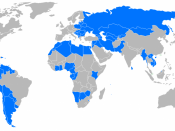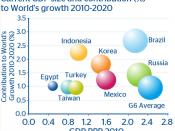Thanks to microchips, companies in developed markets routinely collect and store huge volumes of information about their customers. Thanks to continuous-relationship-marketing (CRM) tools, this valuable resource doesn't lie inert but is instead used to fashion sample customer segments that can be used to test new offers. The winning ones are then turned into full-scale marketing campaigns.
It seems unlikely that CRM would work this well in emerging markets, where accurate customer data, advanced IT systems, and marketing experts are all in shorter supply. Yet it does. Overall, from 10 to 60 percent of the customers targeted in well-designed CRM-based campaigns in emerging markets sign up for the offer they receive--far more than the 5 to 20 percent norm in developed markets. Although CRM activity in emerging markets accounted for only 11 percent of the worldwide total in 2000, it has been growing by 35 percent a year since then.
Why? For a start, consumers in developed markets have wearied of unsolicited mail, sales calls, and spam, but for many consumers in emerging markets, personal attention from companies is still a novelty, and a welcome one. Second, success in CRM depends more on applying its principles creatively than on marshaling massive databases, complex software, and armies of experts. Indeed, some companies that use the fanciest CRM tools available have yet to see any result: in one recent survey of mainly North American retail companies, 69 percent of the respondents said they had gained little or no benefit from their CRM investment.1 But in emerging markets, we have seen substantial value accrue to companies that effectively used whatever skills and data were at hand.
A pragmatic approach to CRM
One mobile-phone operator in Asia, for example, cut customer churn by more than 40 percent by offering a special discount...


